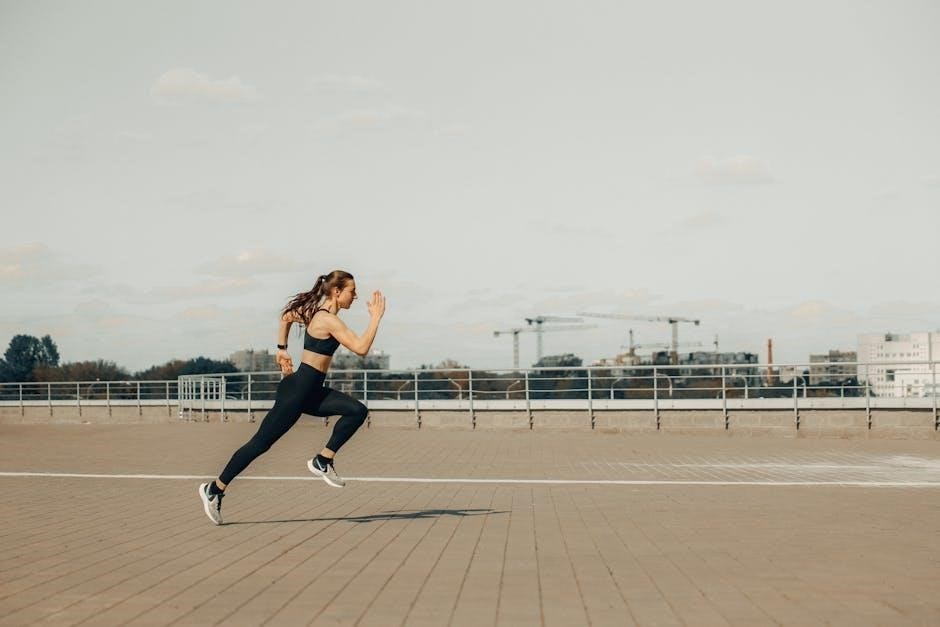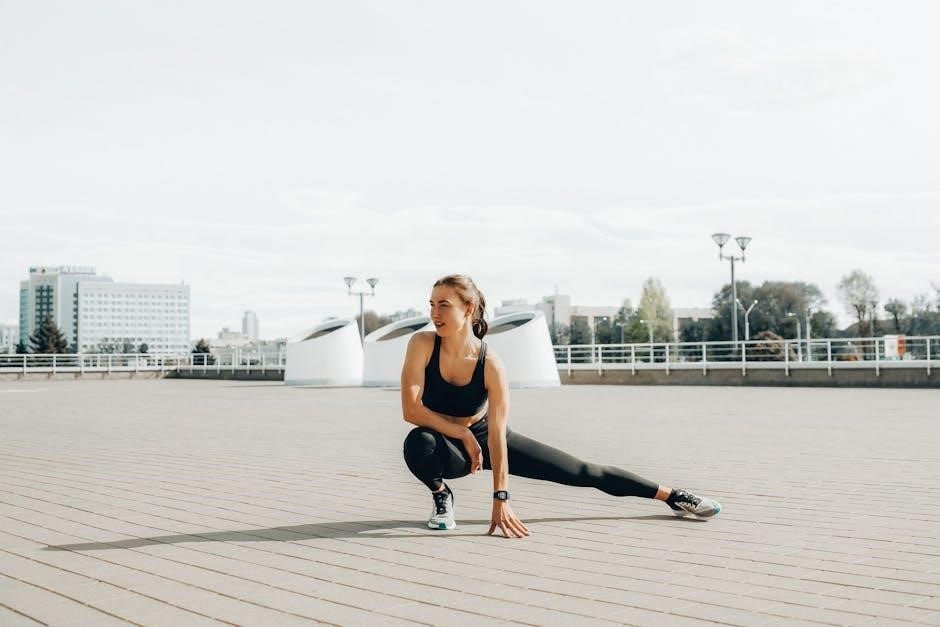SI Joint Pain Relief: A Guide to Exercises

Discover effective exercises to alleviate SI joint pain and enhance joint stability. This guide offers insights into targeted movements, stretches, and strengthening techniques to reduce discomfort. Implement these exercises to improve mobility, alleviate pain, and promote overall wellness.
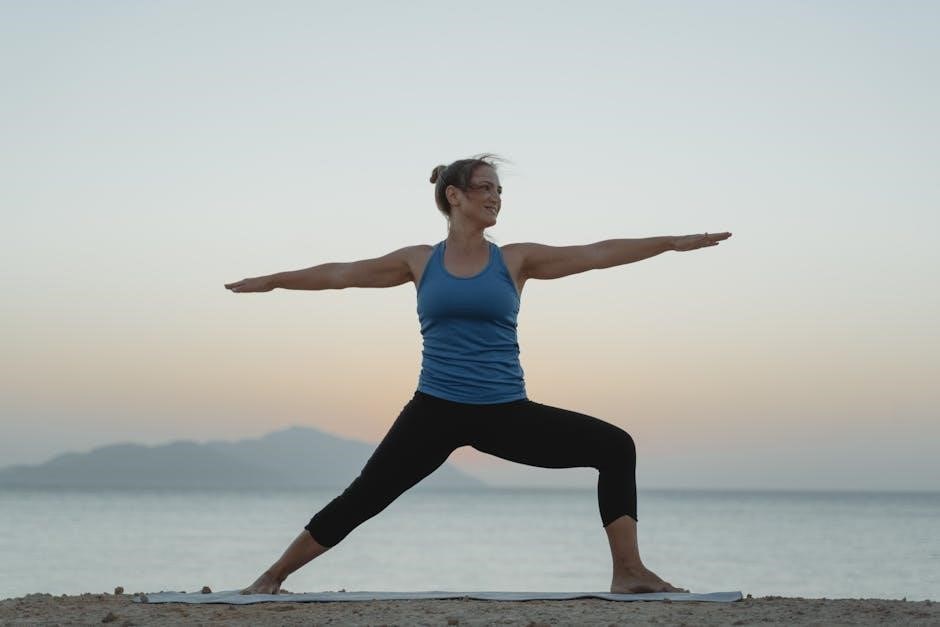
Understanding SI Joint Pain

Understanding SI joint pain is crucial for effective management. This pain originates from the sacroiliac joint, located where the sacrum and ilium meet. SI joint pain is a common cause of lower back and buttock discomfort. It can manifest as a sharp, stabbing pain or a dull ache, often aggravated by specific movements or prolonged postures.
The SI joint plays a vital role in weight distribution and shock absorption. Dysfunction in this joint can lead to pain and instability. Recognizing the symptoms and understanding the anatomy of the SI joint are essential steps in addressing the pain.
The pain can radiate into the groin, hip, or thigh. Identifying the specific triggers and patterns of pain helps in diagnosis. It’s important to differentiate SI joint pain from other sources of lower back pain. Consider seeking professional evaluation for accurate diagnosis and treatment strategies, including exercises to promote stability and reduce inflammation. Remember, personalized approaches are key to managing SI joint pain effectively.

Causes of SI Joint Pain
SI joint pain can arise from various factors affecting the stability and alignment of the sacroiliac joint. Common causes include traumatic injuries like falls or car accidents, which can directly impact the joint’s integrity. Pregnancy and childbirth can also contribute due to hormonal changes and increased stress on the joint.
Arthritis, both osteoarthritis and rheumatoid arthritis, can lead to inflammation and degeneration of the SI joint. Repetitive stress from activities like running or heavy lifting can gradually wear down the joint. Leg length discrepancies can cause uneven weight distribution, stressing the SI joint.

Prior lumbar fusion surgery can alter biomechanics, increasing stress on the SI joint. Muscle imbalances, particularly in the core and hip muscles, can contribute to instability. Infections, though rare, can also cause SI joint inflammation and pain. Identifying the specific cause is crucial for tailoring effective treatment strategies. A comprehensive evaluation by a healthcare professional is recommended to determine the root cause and guide appropriate management.
The Importance of Exercise for SI Joint Stability

Exercise plays a crucial role in maintaining and improving SI joint stability. Strengthening the muscles surrounding the SI joint helps to control movement and reduce stress on the joint itself. Core muscles, including the transverse abdominis and obliques, are essential for stabilizing the pelvis and lumbar spine, directly impacting SI joint health.
Hip muscles, such as the gluteus maximus and medius, provide support and control movement in the lower extremities, preventing excessive strain on the SI joint. Exercises that target these muscle groups can improve alignment and reduce pain. Regular exercise enhances blood flow to the area, promoting healing and reducing inflammation.
Specific exercises like bridges, bird-dog pose, and planks can improve core and hip strength, contributing to SI joint stability. A well-structured exercise program can address muscle imbalances and improve overall biomechanics. Consistent physical activity is vital for long-term management of SI joint pain and prevention of future problems. It is important to consult with a healthcare professional to develop a safe and effective exercise plan.
Core Strengthening Exercises for SI Joint Pain
Core strengthening exercises are vital for alleviating SI joint pain by providing stability and support to the pelvis and lower back. A strong core helps maintain proper alignment, reducing stress on the SI joint. Effective exercises include planks, which engage multiple core muscles simultaneously, and bird-dog exercises, which improve stability while promoting balance.
Pelvic tilts are gentle movements that strengthen the abdominal muscles and improve spinal mobility. Dead bug exercises enhance core control and coordination by challenging stability while moving the limbs. The transverse abdominis muscle, a deep core stabilizer, can be activated through exercises like abdominal bracing.
It’s essential to perform these exercises with proper form to avoid exacerbating pain. Start with a few repetitions and gradually increase as strength improves. Regular core strengthening can reduce inflammation, improve posture, and alleviate SI joint pain. Consulting a physical therapist can help tailor a program to individual needs and ensure safe and effective exercise techniques. Integrating these exercises into a daily routine is essential for long-term pain management.
Specific Exercises for SI Joint Pain Relief
Targeted exercises can provide significant relief from SI joint pain by improving joint stability and reducing inflammation. The lying hip adduction exercise strengthens the inner thigh muscles, contributing to pelvic alignment and stability. Performing the bridge pose engages the glutes and hamstrings, which supports the SI joint.
The triangle pose enhances flexibility and strengthens the muscles surrounding the SI joint, promoting balance and reducing tension. The bird-dog pose is a dynamic exercise that improves core strength and coordination while challenging stability. Squats and lunges can be modified to strengthen the lower body while minimizing stress on the SI joint.
Knee-to-chest stretches gently improve mobility and reduce stiffness in the lower back and hips. The figure 4 stretch targets the piriformis muscle, which can contribute to SI joint pain. Trunk rotation stretches enhance flexibility and reduce tension in the surrounding muscles. These exercises should be performed with proper form and gradually increased in intensity to avoid exacerbating pain. Regular practice can improve joint function and alleviate discomfort.
Lying Hip Adduction and Abduction
Lying hip adduction and abduction exercises are effective for strengthening the muscles surrounding the SI joint, contributing to improved stability and pain relief. Hip adduction involves bringing the leg towards the midline of the body, targeting the inner thigh muscles. This exercise can be performed lying on your side with the bottom leg extended and the top leg lifted towards the ceiling.
Hip abduction involves moving the leg away from the midline of the body, engaging the outer hip muscles. To perform hip abduction, lie on your side with both legs extended and lift the top leg towards the ceiling. Resistance bands can be added to increase the intensity of both exercises.
These movements help to balance the muscles around the pelvis, reducing stress on the SI joint. Strengthening these muscles improves pelvic alignment, which is crucial for reducing pain and improving function. Perform these exercises slowly and with control, focusing on proper form to maximize benefits and minimize risk of injury. Regular practice can significantly contribute to SI joint stability and pain management.
Bridge Pose for SI Joint Stability
The Bridge Pose is an excellent exercise for enhancing SI joint stability by strengthening the glutes, hamstrings, and core muscles. Begin by lying on your back with your knees bent and feet flat on the floor, hip-width apart. Engage your core muscles and gently tilt your pelvis back to flatten your lower back against the floor.
Press through your heels to lift your hips off the floor, creating a straight line from your knees to your shoulders. Squeeze your glutes at the top of the movement and hold for a few seconds. Slowly lower your hips back down to the starting position. Focus on maintaining a stable core throughout the exercise to prevent excessive movement in the SI joint.
The Bridge Pose helps to improve pelvic alignment and reduce stress on the SI joint. By strengthening the muscles that support the pelvis, this exercise promotes better joint mechanics and reduces pain. Regular practice of the Bridge Pose can significantly contribute to SI joint stability and overall lower back health. Remember to breathe deeply and maintain proper form throughout the exercise.
Bird-Dog Pose for Core and SI Joint Strength
The Bird-Dog pose is a dynamic exercise that enhances core stability and strengthens the muscles surrounding the SI joint. Start on your hands and knees, ensuring your hands are directly under your shoulders and your knees are under your hips. Engage your core to maintain a neutral spine.
Extend one arm forward and the opposite leg backward simultaneously, keeping them parallel to the floor. Avoid arching your back or rotating your hips. Focus on maintaining a straight line from your head to your heel. Hold the position for a few seconds, then slowly return to the starting position. Repeat on the opposite side.
The Bird-Dog pose promotes core activation, which is crucial for SI joint stability. By strengthening the abdominal and back muscles, this exercise helps to control movement in the pelvis and reduce stress on the SI joint. Regular practice of the Bird-Dog pose can improve balance, coordination, and overall spinal health. Remember to breathe deeply and maintain proper form throughout the exercise for optimal results.
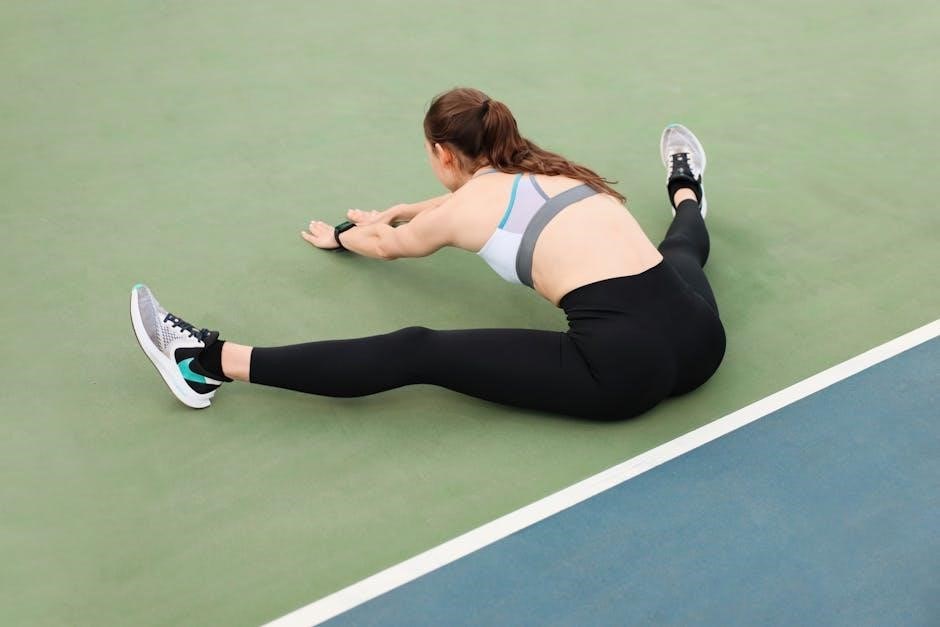
Stretches for SI Joint Pain Relief
Specific stretches can provide significant relief from SI joint pain by releasing tension in the surrounding muscles. The knee-to-chest stretch involves lying on your back and gently pulling one knee towards your chest, holding for 20-30 seconds, and repeating on the other side. This stretch targets the glutes and lower back, promoting relaxation.
The figure-four stretch, or piriformis stretch, is another effective technique. Lie on your back with your knees bent, place one ankle on the opposite knee, and gently pull the thigh of the bottom leg towards your chest. Hold for 20-30 seconds and repeat on the other side. This stretch releases tension in the piriformis muscle, which can compress the sciatic nerve and contribute to SI joint pain.
Trunk rotation stretches can also alleviate discomfort. Lie on your back with knees bent and gently rotate your knees to one side while keeping your shoulders on the ground. Hold for a few seconds and repeat on the other side. These stretches improve flexibility and reduce stiffness around the SI joint.
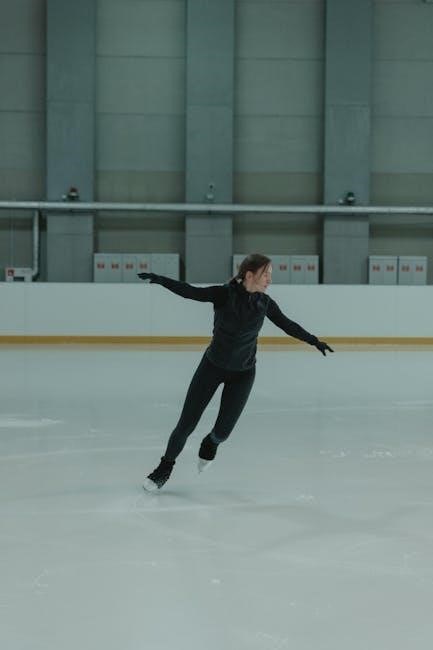
Pilates and Yoga for SI Joint Pain
Pilates and yoga offer gentle yet effective approaches to managing SI joint pain by focusing on core strength, flexibility, and body alignment. Certain Pilates exercises, such as pelvic tilts and leg circles, can help stabilize the pelvis and strengthen the deep core muscles, which support the SI joint. These exercises promote proper alignment and reduce stress on the joint.
Yoga poses like Child’s Pose provide a gentle stretch for the lower back and hips, relieving tension and promoting relaxation. Cat-Cow pose enhances spinal mobility and encourages gentle movement in the SI joint, improving flexibility and reducing stiffness. Bridge pose, while also a strengthening exercise, can be modified in yoga to promote pelvic stability and alignment.
It’s crucial to avoid poses that may exacerbate SI joint pain, such as deep twists or extreme hip flexions. Focus on controlled movements and proper form to prevent further irritation. Consulting with a qualified Pilates or yoga instructor experienced in working with SI joint dysfunction is advisable to ensure exercises are tailored to individual needs and limitations.
